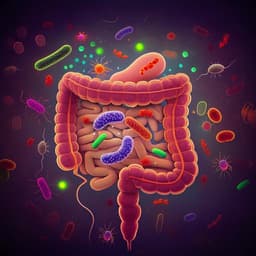
Food Science and Technology
Systematic evaluation of antimicrobial food preservatives on glucose metabolism and gut microbiota in healthy mice
P. Li, M. Li, et al.
This study reveals the surprising impact of common antimicrobial preservatives on glucose metabolism and gut microbiota in healthy mice. Conducted by a team from the State Key Laboratory of Food Science and Technology, Nanchang University, the research highlights that even biogenic preservatives like nisin can lead to significant metabolic disruptions.
Playback language: English
Related Publications
Explore these studies to deepen your understanding of the subject.







